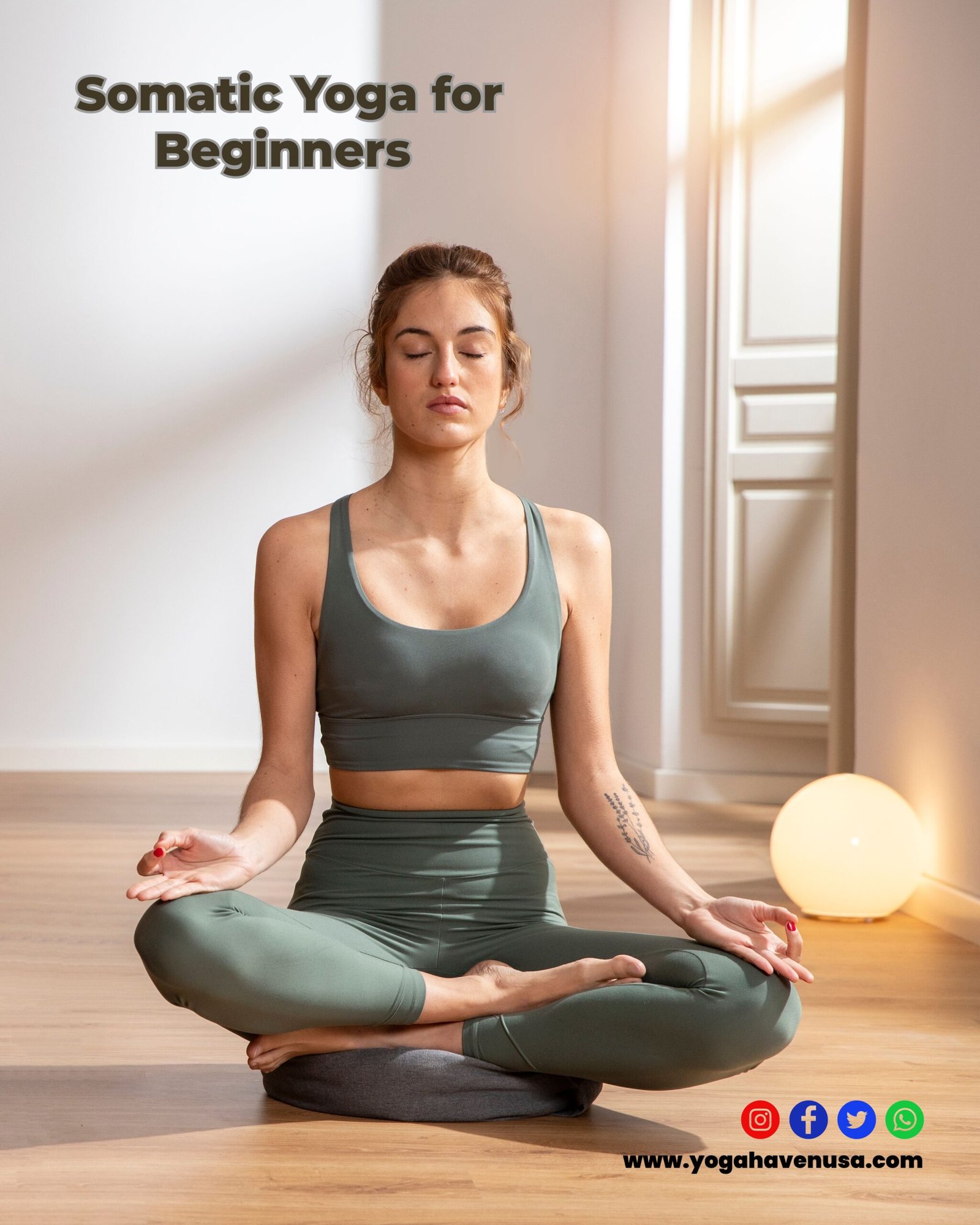Introduction
Somatic yoga combines mindful movement with breath awareness. It is designed to help people reconnect with their bodies. Unlike traditional yoga, somatic yoga focuses on slow, intentional movements. This practice is excellent for beginners. It allows you to ease into your body’s natural rhythms. Here’s what you need to know about starting somatic yoga.
What Is Somatic Yoga?
Somatic yoga is a gentle practice. It connects the mind and body through movement. The word “somatic” means “of the body.” It emphasizes feeling movements from the inside out. This practice helps relieve tension and pain. It also improves body awareness and coordination.
Benefits of Somatic Yoga for Beginners
There are many benefits of somatic yoga, especially for beginners. Some of these include:
- Improved Body Awareness
Somatic yoga teaches you to listen to your body. You become more in tune with its needs. This awareness helps prevent injury somatic yoga for beginners . It also encourages mindful living. - Stress Relief
Slow movements help calm the nervous system. The focus on breath reduces stress. It promotes relaxation. Many beginners find this practice deeply soothing. - Pain Management
If you suffer from chronic pain, somatic yoga can help. It releases tension in the muscles. The gentle approach makes it ideal for those with physical limitations somatic yoga for beginners. - Increased Flexibility
Over time, somatic yoga increases flexibility. Since it focuses on small movements, it helps you move safely. Beginners will notice improved range of motion.

How to Start Somatic Yoga
Starting somatic yoga is easy. You don’t need any special equipment. A mat and comfortable clothes are all you need. Here are a few tips for beginners:
1. Find a Quiet Space
Choose a quiet spot to practice. Turn off any distractions. You want to focus on the connection between your breath and movement.
2. Start with Simple Movements
Begin with basic movements. Focus on slow, controlled motions. Don’t rush through your practice. The goal is to connect with your body’s sensations.
3. Breathe Deeply
Inhale and exhale slowly. Deep breathing is key to somatic yoga. It helps you stay present in each movement. Beginners should pay special attention to breath control.
4. Practice Mindfulness
Stay present during your session. Notice how your body feels with each movement. Somatic yoga is about awareness, not perfection.
Basic Somatic Yoga Poses for Beginners
If you’re new to somatic yoga, start with simple poses. These are easy for beginners and help build a foundation.
1. Pelvic Tilt
Lie on your back with knees bent. Slowly tilt your pelvis forward and back. Feel the movement in your lower back. This pose helps release tension in the lower spine.
2. Somatic Cat-Cow
Get on all fours. Arch your back and tuck your chin to your chest. Then, drop your belly and lift your head. Move slowly between these two positions. This pose improves spine mobility.
3. Knee Drops
Lie on your back with knees bent. Slowly drop one knee to the side. Then bring it back to the center. Repeat on the other side. This movement loosens tight hips and lower back muscles.
4. Shoulder Rolls
Sit comfortably. Roll your shoulders forward, then backward. Move slowly and feel the sensation. This pose releases shoulder and neck tension.
How Somatic Yoga Differs from Traditional Yoga
While both practices focus on movement, somatic yoga is more about internal awareness. Traditional yoga often emphasizes flexibility and strength. Somatic yoga emphasizes mindful movement and the body’s sensations. For beginners, this can be less intimidating.
In somatic yoga, there is no right or wrong way to move. The goal is to feel your body and let it guide you. In traditional yoga, certain poses require specific alignments. Somatic yoga gives you the freedom to explore your body without judgment.
Tips for a Successful Somatic Yoga Practice
Starting any new practice can be challenging. Here are a few tips to make your somatic yoga journey easier.
1. Go Slow
There’s no rush in somatic yoga. Moving slowly allows you to feel each part of your body. Beginners should focus on quality, not speed.
2. Be Patient
It takes time to build body awareness. You might not feel results right away. Stick with the practice and stay patient with yourself.
3. Practice Consistently
Consistency is key. Set aside a few minutes each day for somatic yoga. Even short sessions can make a difference.
4. Listen to Your Body
If something doesn’t feel right, stop. Somatic yoga is about honoring your body’s needs. Never force a movement.

Somatic Yoga for Beginners: Final Thoughts
Somatic yoga is a gentle, mindful practice. It’s perfect for beginners looking to improve body awareness, relieve stress, and manage pain. The slow movements allow you to connect with your body in a new way. By listening to your body, you’ll find a deeper sense of balance and calm.
If you’re ready to try somatic yoga, start with simple poses and go at your own pace. With regular practice somatic yoga for beginners, you’ll notice increased flexibility, reduced pain, and a greater connection between your mind and body. Somatic yoga is more than just movement—it’s a path to self-discovery and healing.
Conclusion
Somatic yoga is an excellent entry point for anyone new to yoga. Its gentle movements, focus on mindfulness, and emphasis on body awareness make it a perfect choice for beginners. By tuning in to your body’s natural rhythms and respecting its limits, you can reduce stress, improve flexibility, and manage pain in a holistic way.
The beauty of somatic yoga lies in its simplicity. There is no rush, no competition, and no need for perfect poses somatic yoga for beginners. As you continue your practice, you’ll find yourself more connected to your body and mind, fostering overall wellness. Whether you’re seeking relief from physical tension or a deeper sense of peace, somatic yoga provides a safe, nurturing space for personal growth.
